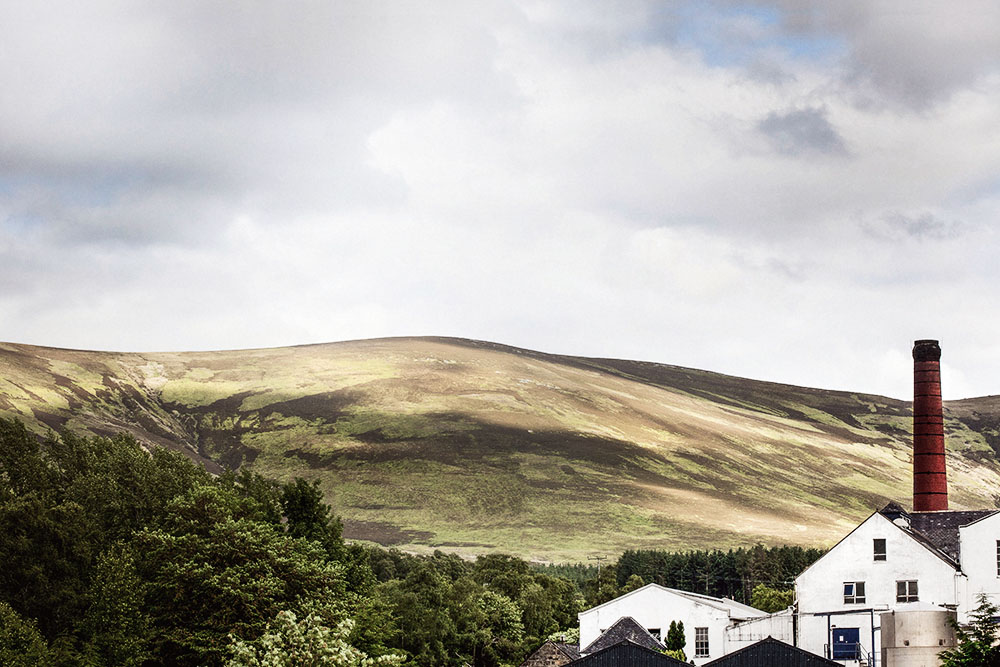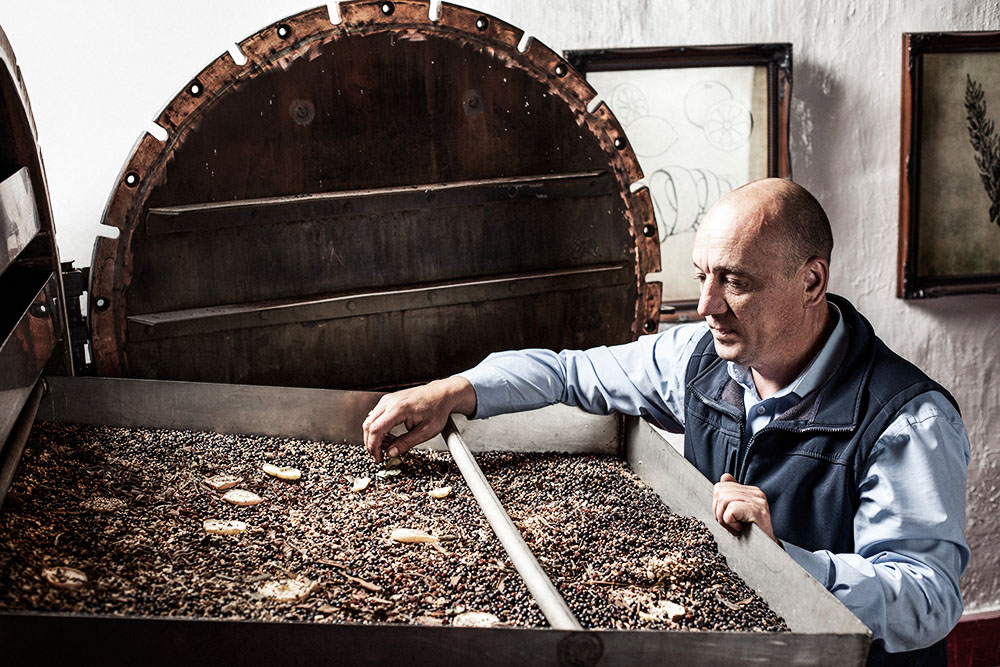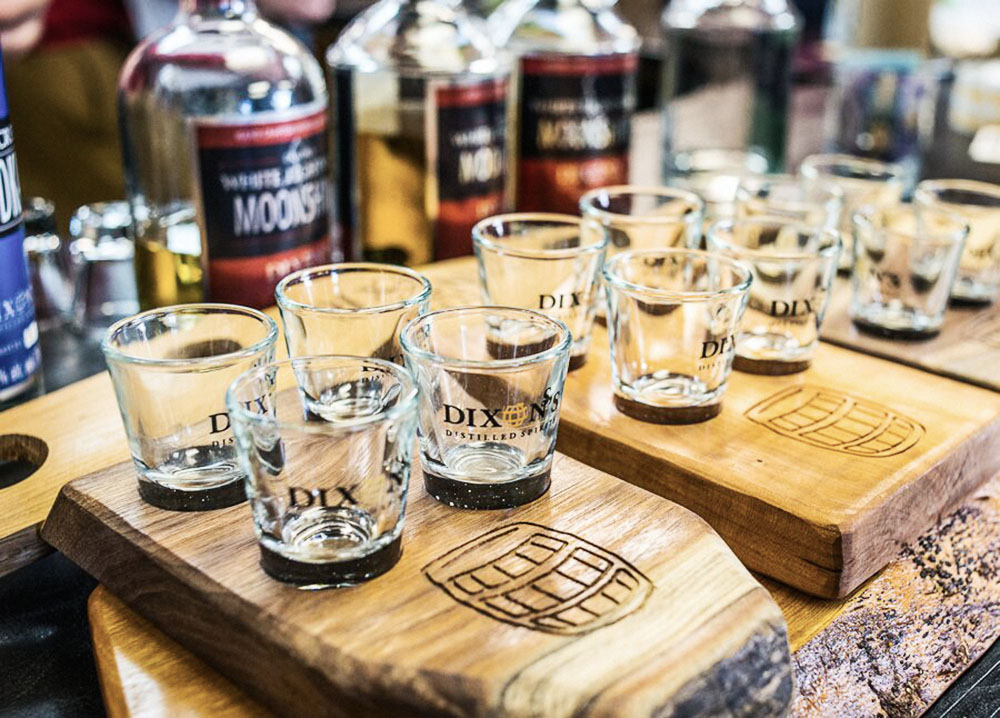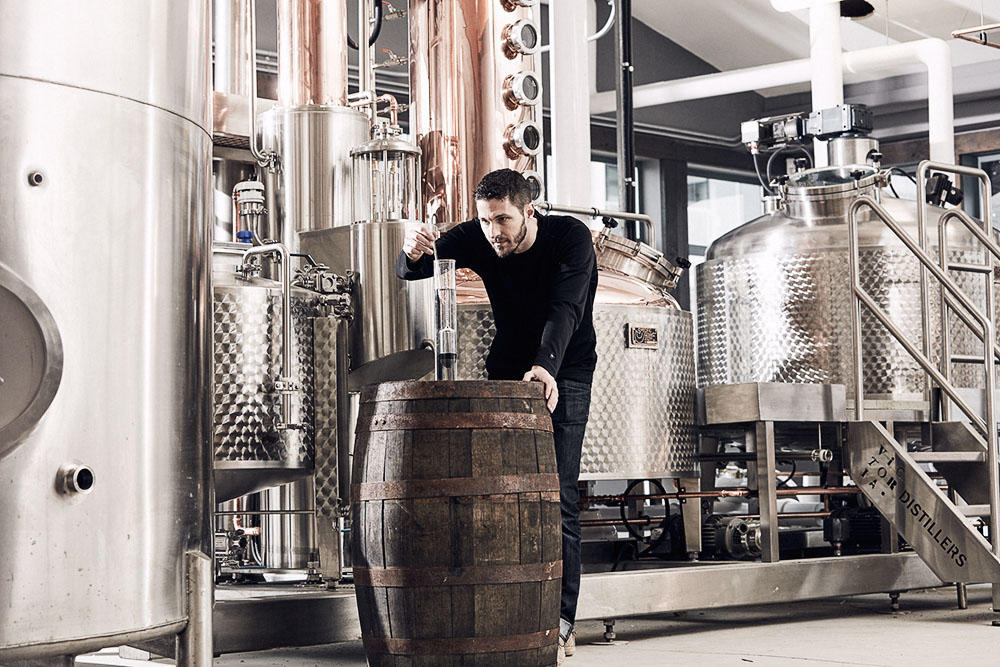Re-inventing A Classic: Berry Bros. & Rudd No. 3 London Dry Gin
“Gins have come a long way since they were introduced to England,” confirms Mike Harrison, sales development director for Berry Bros. & Rudd, the venerable UK wine and spirits merchant and the recipe holder for No.3 London Dry Gin (No.3 refers to the street address of the firm’s London shop). “It has been on the radar constantly,” he maintains, “though it is only recently that it has started to expand at an almost exponential rate.”
No.3 London Dry Gin is, in a manner of speaking, a bit of a blast from the past updated for the modern palate. “London Dry,” as Harrison explains, was originally coined to differentiate this style from its more common (sweet) predecessor.
Harrison notes that London Dry is often singled out as the most prestigious gin style due to the strict guidelines that must be followed during production. A traditional copper pot still is used for the final distillation once the flavour- and aroma-producing botanicals are left to steep overnight (No.3 uses three fruits and three spices, including grapefruit peel, Angelica root and Moroccan coriander). “Once distilled, the flavour of the gin cannot be altered in any way,” Harrison reveals. “This means that the skills of the distiller are truly apparent.”
It’s Pronounced Ka-roon: Caorunn Scottish Gin
From the same side of the pond comes one of the newer craft gins to grace our shelves: Caorunn. Crafted by the Balmenach Distillery in the Scottish Highlands, where distilling techniques have been passed down for more than two centuries, Caorunn has some very unique aspects to it.
“Caorunn is a small-batch gin, handcrafted in a copper berry chamber, using a vapour-infusion method,” notes the distillery’s assistant manager and gin master Gordon Stevenson. “The berry chamber was manufactured in the US in the 1920s to produce perfume, and it was shipped to Scotland in the 1960s.”
When it comes to what goes into the chamber, Stevenson explains, “I use 11 botanicals, five of which are local to the distillery. I forage them the day before I’m due to distill.” This provides more than a few challenges.
“As the five Celtic botanicals are seasonal, I have to ensure I gather enough of each prior to the season ending so I have stock to carry us through the winter months,” he says. Stevenson points out that Caorunn is infused in 1,000-litre batches in what he describes as a “very slow process” that he oversees entirely. The work, however, has paid off handsomely.
Something Wicked This Way Comes: Dixon’s Wicked Citrus Gin
“Interestingly enough, none of us on the Dixon’s team actually liked gin,” confesses Vicky Dixon proprietor and distiller at Guelph, Ontario’s Dixon’s Distilled Spirits. “The general consensus was that it had the similarity of licking a pine tree.” Rather than abandoning gin altogether, though, the Dixon’s gang decided that making a gin that would appeal to both aficionados and, well, normal people too, would be a fun challenge. “We decided to try a light juniper and citrus blend,” she reveals. It obviously worked. “It got us drinking gin again. And a few of our ‘sworn-off gin’ friends are now back in the gin game.”
Boutique distillers like Dixon’s may not have the marketing clout or history of the “big boys,” but this gives them something the spirit behemoths don’t have as much of: freedom to experiment and go “off recipe.” That was the thing that certainly helped Dixon’s when it came to producing Wicked Citrus (along with their liquorice-forward Wicked 6). “Our uniqueness comes from our freedom to create new and exciting flavours, but also from the fact that we didn’t like gin. We set out to create a gin that would let notes other than strong juniper shine through.”
Although only open for just over a year and with (at this point) a strictly local (and loyal) fan base, Dixon’s aims to grow into the world market. But it certainly strives to stay true to the market that has been so appreciative of its gins and other spirits.
“Ontario is our home, and we are very proud Canadians,” Dixon contends. “We have had our doors open for one year, and the local support has been both overwhelming and heart-warming. So it only made sense for us to start out focusing locally and expand from there.”



Knocking Back The Door: Death’s Door Gin
Founder and president Brian Ellison didn’t name his Wisconsin-based operation Death’s Door Spirits to invoke the souls of the dead.
“Death’s Door is the name of the passage that separates Washington Island from the mainland,” he reveals, adding that the founding of Death’s Door Spirits had everything to do with finding a high-value product for the wheat that’s grown on the island. “We started with bread and baked goods, then made some beer, and finally learned how to produce distilled spirits.”
The decision to make a gin, Ellison admits, was because of the preponderance of juniper that grows wild on Washington Island. But this practicality in no way reduced his desire to fashion a top-flight gin. “We didn’t use any other gins for inspiration,” he says. “We simply created a simple spirit using local botanicals, and based it on the premise that ‘less is more.’”
To keep things simple, Ellison uses only three botanicals: juniper, coriander and fennel seeds. “We flavour our distillate in a ‘one-shot’ method, placing all three botanicals in an extraction chamber and running the distillate vapour through them, directly followed by our condenser. There is no crushing of the botanicals and there are no additional flavours added other than what comes off the pot still with the adjacent extraction chamber.”
Yellow Gin From The Great White North: Ungava Premium Dry Gin
Taking its name from the expansive area of northern Quebec bordering Ungava Bay, Ungava Gin differentiates itself through the use of northern botanicals that give it a somewhat startling (for gin) lemon-yellow hue.
“The northern Canadian botanicals are very unique and add a huge element to our quality,” contends Joshua Groom, On Premise Portfolio Manager, Camus Cognac & Domaine Pinnacle — the latter being the maker of Ungava Gin. “We use them during and post distillation, which we believe creates more balance in the final product, leading to more approachability.”
Interestingly, the use of these unique botanicals has an additional side benefit. “Our post-distillation use of botanicals provides an opportunity to have a higher alcohol content without the negative aspect — alcohol burn,” Groom reveals. “It’s the use of our unique botanicals that helps us achieve balance.”
A Gin Reborn: Victoria Distillers
“My background is in molecular biology, but I was a bartender for 11 years while I went to school. Distilling brings together art and science very nicely,” says Victoria Distillers’ master distiller, Peter Hunt.
A decade ago, out on Canada’s west coast, Hunt and his team crafted Canada’s first premium gin. Today, with a new partnership, a new distillery and new packaging, Victoria Gin has been reborn. Though much has changed, the spirit remains the same.
Hunt admits his inspiration came from one of the “big boys,” but he figured he could top them. “We were Bombay drinkers,” he concedes, “but we thought we could make something better. We started with many of the same ingredients as Bombay, but slowly changed several botanicals and adjusted the techniques to refine the spirit further.
“We use ten botanicals that focus on four flavours: citrus, floral, juniper and spice. Our juniper notes are scaled back from your average London Dry, and all four flavour elements are in balance. This makes for a versatile gin that is great in a wide variety of cocktails, but is enjoyable neat.”

Barry Bros. & Rudd No.3 London Dry Gin
Like all London Dry gins, No. 3 is juniper-forward, with notes of pine, bright citrus notes and traces of coriander. Crisp and fresh, it’s beautifully balanced with traces of citrus and spice.
Caorunn Small Batch Scottish Gin
As with the No. 3, Caorunn is fashioned in the London Dry style. So there are some definite pine/juniper notes for sure, but there are also notes of cardamon, anise, herbs and dashes of lemon and vanilla. Very smooth with a creamy mid-palate.
Death’s Door Gin
Keeping things simple has its upside in that each component leaves a clear impression. The wild juniper, coriander and fennel harmonize beautifully, resulting in a clean, crisp gin with a complexity that belies the three main flavour components.
Dixon’s Wicked Gin
Juniper, liquorice, woodsy, baked lemon, sweet citrus and papaya with some heat on the finish; not a creamy style.
Ungava Canadian Premium Gin
Some juniper for sure, but also distinct notes of citrus peel with a dash of coriander and floral nuances. Gently resinous in the mouth, with juniper and spice balancing some floral elements. Fairly complex.
Victoria Gin
Juniper’s fragrant evergreen notes are here for sure, but with added complexity from a dash of baking spice (ginger, clove), a hint of anise, a whiff of wildflower and some subtle, earthy tones. Quite assertive in the mouth, with coriander, orange, mild spice and, of course, some refreshing, juniper-imparted bitterness.
